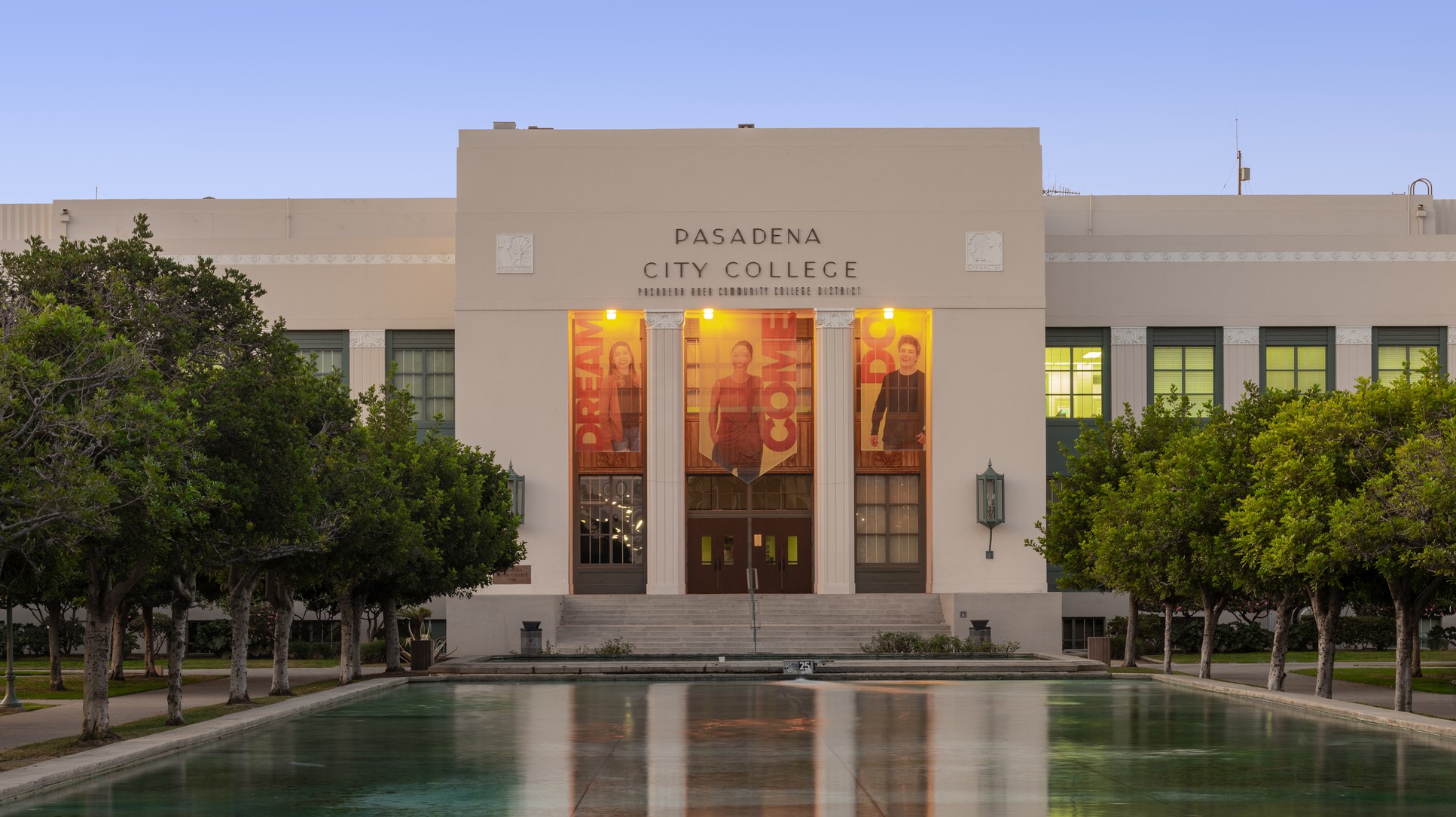Workforce Training From an EWD Perspective
Pam Sornson, JD
June 21, 2022
Leslie Thompson has made ‘Higher Education’ her career for 26 years. Currently serving as the Director of Operations in Economic and Workforce Development (EWD) at Pasadena City College (PCC), she oversees the work of the division’s seven pillars, including that of the Workforce Training pillar.

Each day, as she looks over all the division’s activities, she focuses on a central theme to guide her thoughts and next steps: clarifying and pursuing the true purpose and goal of the division’s work. From her perspective, the EWD’s ultimate goal is to offer a ‘people-focused’ approach to training, upskilling, and preparing its student body to achieve maximum economic mobility in their chosen fields. Achieving that goal also means finding sufficient educational and employment opportunities so PCC students can actually attain that mobility. It’s only after a long series of interim goals are pursued and accomplished that both aspirations can be met.
Structuring a path toward those realities, however, is a complex task:
She sees the work of the EWD as both inward and outward facing:
Inward-facing – Its educational assets must be appropriate to achieve student goals, and its seven pillars provide information, support, and training on career research, academic pathways, and job searching.
Outward-facing – It should also provide upskilling and training facilities and resources to improve the regional community workforce for the benefit of EWD’s enterprise partners.
She’s also invested in what’s going on in the greater workforce development ecosystem, exploring possible barriers, and focusing on maximizing the points where systems intersect.
The need to reskill the existing workforce is also critical. Entire economic sectors have had to change how they do business, communicate with each other, and sometimes coordinate totally new resources to achieve milestones that may or may not now be obsolete.
And, of course, her primary focus is on the student’s success – ‘people-focused,’ in Thompson’s mind, means leveraging on- and off-campus resources to offer supports necessary to facilitate student success, whether those address transportation, housing, or financial needs, or achieving basic educational foundations.
Thompson’s job, then, is to maintain the division’s attention on the school’s ultimate goals while also monitoring the new labor force environment for barriers and opportunities.

Existing Programs
PCC engages with several state and federal agencies to deliver appropriate training and upskilling for both incumbent and displaced workers:
The Employment Training Panel (ETP)
ETP is a funding source for employers to provide upskilling training for new and existing workers. Funded through a California state payroll tax, the ETP resource helps workers improve their wages and long-term job opportunities. EWD serves as a contractor to access that funding and facilitate training.
Contract Education
‘Just In Time’ training provides the upskilling training needed by the existing workforce of the local business community. These training services eliminate the need for businesses to develop training in-house and maximize the value of state-based ETP funding and other employer resources.
California Training Initiative
The California Workforce Association granted EWD’s participation in this initiative, providing growth opportunities for EWD to deliver quality training to a variety of local employers to upskill the existing workforce.
TAA & I-TRAIN
These federally funded programs subsidize a student’s journey to obtain skills and credentials via PCC. EWD partners with local EDD and Workforce Development Boards to attract and support student clients by assisting with their applications and supporting their program engagement from entry to PCC to program completion.
PCC collaborates with regional agencies as well, all of which also operate within the workforce development ecosystem. Cooperative business organizations such as the Los Angeles Economic Development Corporation (LAEDC) and the San Gabriel Valley Economic Partnership (SGVEP) offer their unique assets and perspectives to the effort. They, too, are rethinking how they will move forward in light of how evolutions in the work world are impacting their internal processes and outward-facing programs.

New Opportunities
Despite the complexity of the work, Thompson intends to build on successes already achieved by existing workforce development initiatives, including those within the EWD, the region, and the state. She staunchly believes in California’s several billion-dollar investment in its community colleges as its workforce development engines. The EWD pillars work to maximize the impact of their effort by intersecting with these entities so that all can achieve their common goals.
The Robert G. Freeman Center for Career and Completion provides employment attainment training for PCC learners, including resume development, mock interviews, and job fairs. It offers student career development services, helps students find job opportunities, prepares them for job searches and interviews, and curates alumni engagement.
The Small Business Development Center offers small business owners guidance, training, insights, and resources to start, build, or scale their enterprise as they contribute labor and workforce insights to PCC.
The PCC Extension provides not-for-credit courses for a variety of adult learners. Workforce training, professional development, and life-enrichment programs encourage learners of all ages to continue their intellectual growth.
Workforce Training develops and delivers customized training programs to meet the needs of individual businesses and organizations to upskill their employees.
Thompson sees these PCC assets as the foundation of an exceptional opportunity to attain a high-quality education, appropriate job-training skills, and ultimately, a life-sustaining occupation or career and the economic mobility that that entails. While there may be systemic barriers within the workforce development ecosystem to explore and address, she believes that the ‘collective objective’ of the greater community to address economic and social concerns through collaboration and communication will facilitate social and economic success for all its residents.








































